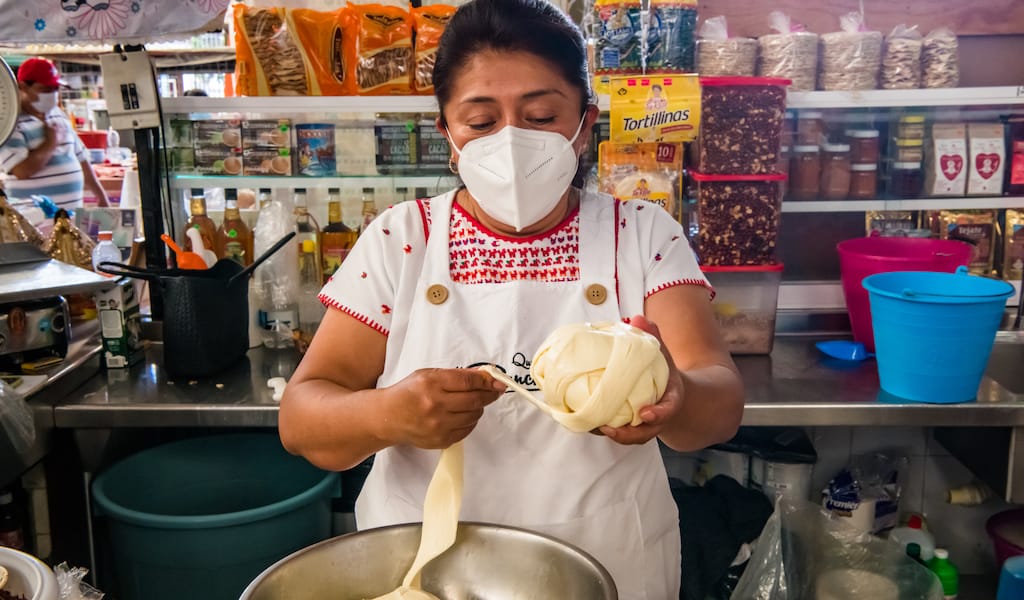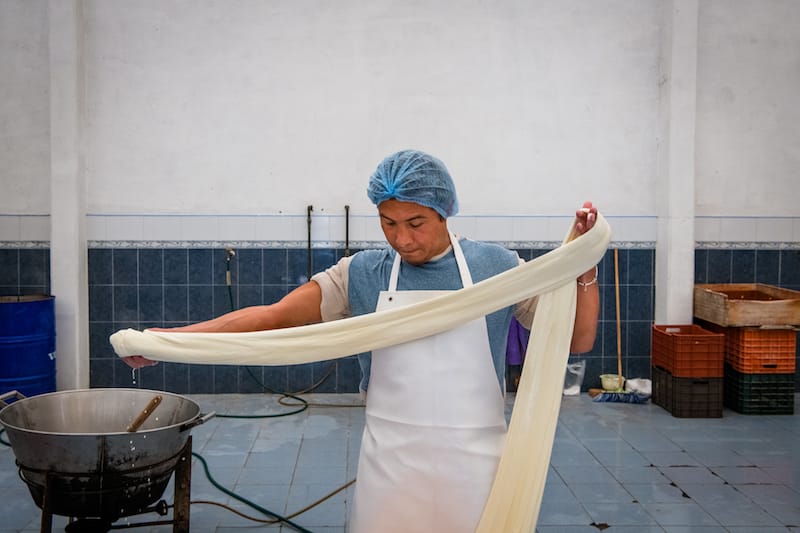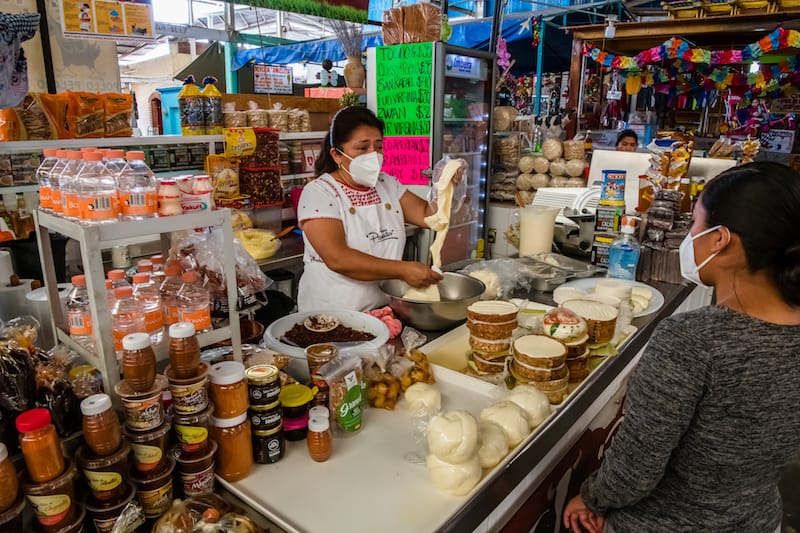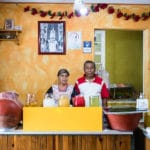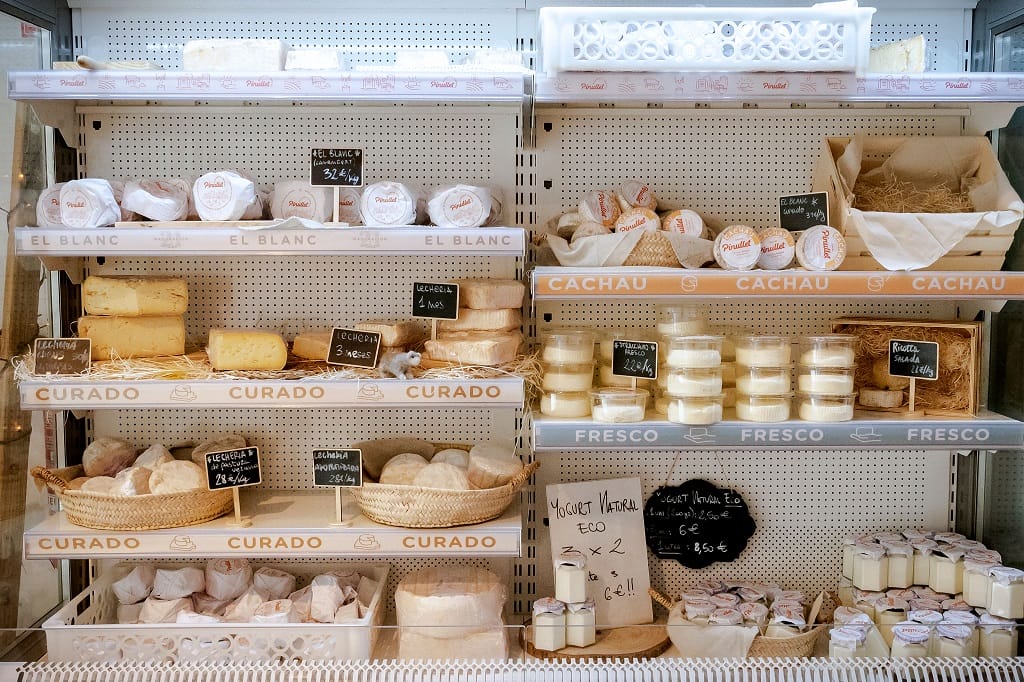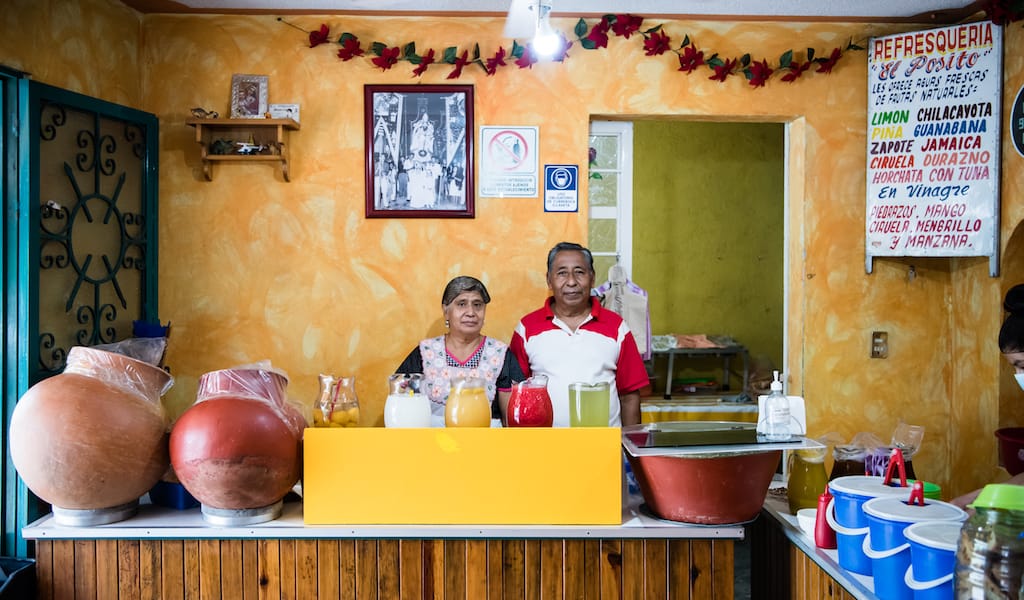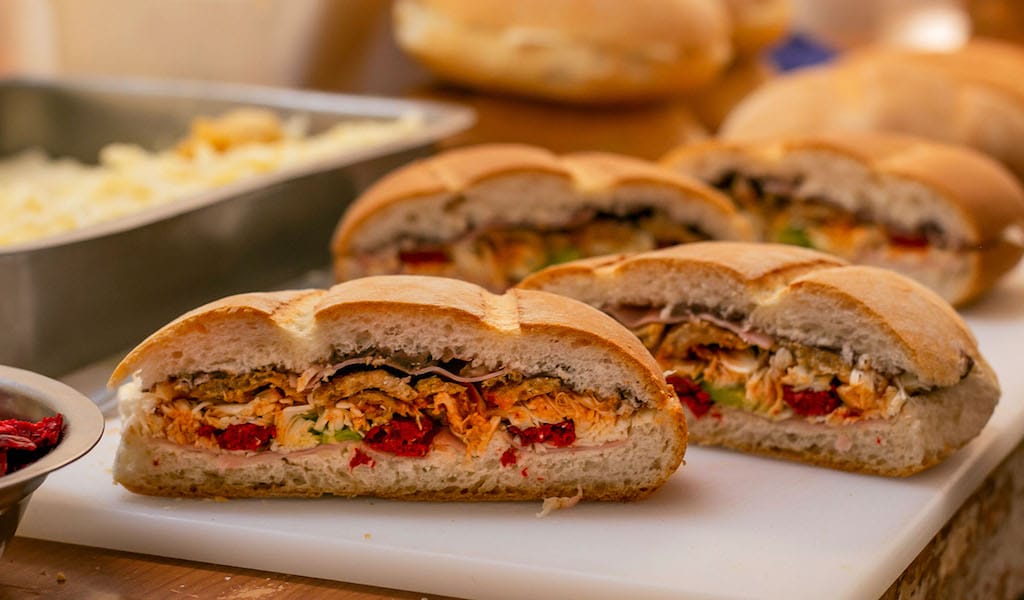The line between legend and actual history is often blurred by time, particularly when it comes to the origins of beloved foods. Such is the case of Oaxaca’s most popular cheese, quesillo, a type of string cheese that’s a member of the pasta filata (“spun paste” in Italian) family, similar to mozzarella.
The most widespread origin story is that in 1885, Leobarda Castellanos, a 14-year-old girl in charge of preparing the cheese at her family’s business, got distracted and let the milk coagulate past the exact point for making cheese. To avoid being punished, she tipped hot water over the milk, accidentally creating a gummy product that unexpectedly became very popular among the clients of the Castellanos family in the Oaxacan village of Reyes Etla, the official birthplace of quesillo.
Cattle and, therefore, dairy production didn’t exist in Oaxaca – or anywhere else in Mexico for that matter – before the Spanish colonization. When Spanish cowboys settled in Oaxaca in the late 16th century, they found the flat and wide fields in the Valley of Etla to be the most suitable area for raising cattle. Over the next 400 years, Etla developed an attendant cheesemaking tradition that is still going to this day.
Although most Oaxacan dishes have strong Indigenous roots, quesillo is one of the few non-Indigenous ingredients present in the local cuisine. We’ll never know how local inhabitants first reacted to dairy products brought and consumed by the Spanish, but what we do know is that such products had around 300 years (or less) to integrate into the local cuisine. Nowadays, we cannot imagine tlayudas crowned with anything other than quesillo, or squash blossom quesadillas filled with any other type of cheese.
The idea that quesillo is a Oaxacan cheese that was created by accident, though popular and charming, has been questioned by food historians, anthropologists and cheese producers themselves. “Many people say quesillo is Oaxacan, but I honestly think it is European and was brought during colonial times by the Dominican order,” reflects Virgilio Santiago, a Oaxacan food historian and researcher, whose relatives have been involved in quesillo-making for generations. “I’ve been around quesillo-making for a long time, and I think the mastery behind its production process doesn’t come by accident.”
Virgilio has a point – quesillo is not an easy cheese to make. There are many steps that must be completed in order to get a quality result. The process begins in the same way as it does for other kinds of cheeses. However, for quesillo, once the curd is ready, it has to be cut, drained and left overnight – or at least a few hours – until it reaches a thick consistency to which boiling water is added. As a result, the curd gets an elastic texture, which is then stretched out into long ribbons and rolled up into balls.
Nowadays, we cannot imagine tlayudas crowned with anything other than quesillo, or squash blossom quesadillas filled with any other type of cheese.
The process might sound easy, but in practice is not – every step has to be done at the right moment, so that the texture and flavor are in perfect balance: “In terms of flavor, quesillo has to be sweet, creamy and juicy – you have to feel this milky juice as you bite it,” says Sinaí Castellanos from Lacteos Arce, a family-run cheese business in Reyes Etla with 60 years of experience. And although Arce now has some points of sale in Oaxaca City, they only sell fresh products made that day, thus giving Oaxacans the chance to enjoy quesillo Etla-style.
The production method and process inherited from Sinaí’s grandfather are still the same, particularly when it comes to milk quality: the better the milk, the better the quesillo. “My grandfather always cared about milk. If you have pure silky whole milk from a healthy and well-fed cow, quesillo will have the perfect texture. Elasticity is key, if the strings break as you stretch them, it means the milk is not authentic,” she explains. However, the degree of elasticity also depends on the variety of quesillo and its degree of fat; that is crema entera, whole milk, or semi-descremado, semi-skimmed. “While we adapt to the different needs of restaurants and clients in terms of use, diet and prices, for me the one and only quesillo will always be the crema entera one,” Sinaí adds.
The purity and concentration of milk are some of the main problems facing quesillo production in Oaxaca, as the lack of water and government support make raising cattle in the area prohibitively expensive (the migration of men to the United States and competition from the large cattle businesses in the neighboring state of Puebla don’t help matters). Some producers buy “fake milk” that has been diluted with either water or powdered milk, in order to reduce costs and maximize production – you need 10 kilos of pure milk to produce one kilo of quesillo.
For Aurora Vasquez Santiago, the owner of Quesería Panchita, another family-run cheesemaking business from Reyes Etla, using ersatz milk is never an option – it’s one of the reasons why she makes one of the best quesillos in town. “The milk supply is not always steady, and when it is low I prefer to make smaller batches rather than using ‘formula.’ Sometimes I have less to sell, but my priority is not the money, it’s keeping up the standards and the tradition. My customers accept this, because ‘Qué sería sin Panchita?’ (What would it be without Panchita?),” she says, laughing over the wordplay of her cheese shop name.
Aurora’s quality standards are so high that her clients know they have to arrive early to one of her two small shops if they want to get quesillo with the “Panchita seal of quality.” “The secrets for a good quesillo are all my mother’s. I follow her recipes religiously every single day, but what I can tell you is that it must look sleek, slightly yellow and it has to melt. That’s the sign of authentic milk,” she adds. After all, quesillo has become one of the most popular cheeses in the country for this very reason: its melting superpower. Taquerías use it for dishes such as melted cheese with chorizo or tortas (sandwiches), pizzerias use it as a substitute for mozzarella, and contemporary restaurants incorporate it into Oaxaca-themed dishes such as quesillo rolls with hoja santa and grasshoppers, or as a base for innovative ice creams and sauces.
It is so versatile and has become such a signature ingredient that it’s exported under the name queso Oaxaca, not quesillo. It’s a title that Oaxacans find outrageous, since it makes such a particular cheese seem like a very generic one. “People called it quesillo as a way to make it stand out from other fresh cheeses also sold in local creameries,” says Virgilio, the food historian and researcher. “It wouldn’t be a bad idea to think about denomination of origin, something like quesillo de Reyes Etla,” he quickly adds.
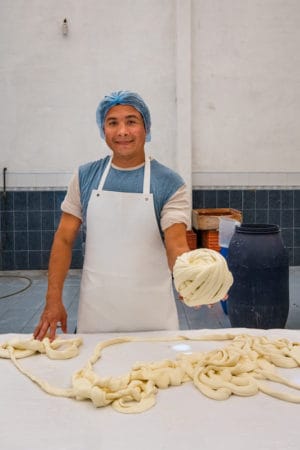 “I have chosen to keep my production in Etla and [remain loyal to] my customers here. I like the fact that it has become popular outside of Oaxaca, but nothing is better than freshly made quesillo. I cannot picture eating quesillo that has been in a shop refrigerator for more than two days. There is no greater pleasure in life than whipping up a taco made only with quesillo, tortillas and fresh salsa you just bought in the market,” says Aurora.
“I have chosen to keep my production in Etla and [remain loyal to] my customers here. I like the fact that it has become popular outside of Oaxaca, but nothing is better than freshly made quesillo. I cannot picture eating quesillo that has been in a shop refrigerator for more than two days. There is no greater pleasure in life than whipping up a taco made only with quesillo, tortillas and fresh salsa you just bought in the market,” says Aurora.
Dedication to the craft is a common theme among these cheesemakers. “Quesillo-making is like quesillo itself: complex, entangled and ambivalent,” says Sinaí as she spontaneously shreds strings of fresh quesillo de crema entera for us. “For example, when you stretch it and roll it into a ball it has to be flexible enough so it can be compressed without breaking, but firm enough to stay solid. We call that core ‘the heart’ of the ball. It is the same with quality and consistency, you need to work with all your heart.”
As we sit with her in one of the production rooms, tasting quesillo, we get the feeling that time had stopped. Almost 150 years ago, or so the story goes, Leobarda Castellanos was inadvertently starting the tradition that Sinaí is now working to preserve. “The Castellanos family from those times eventually separated into four branches throughout the village [Reyes Etla],” Sinaí explains, after we mention that Leobarda is on our mind. “I am not totally sure of how we are related, but the Reyes Etla quesillo makers are passing on her legacy, of that I am sure.”
Editor’s note: Our recurring feature, Building Blocks, focuses on foods and ingredients that are fundamental to the cuisines we write about.
This article was originally published on August 31, 2020.
Published on September 09, 2021







































